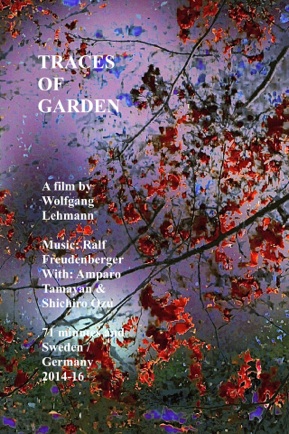
TRACES OF GARDEN
Trailer: https://vimeo.com/153088097
The whole film: https://kinoscope.org/v/traces-of-garden/
Distribution:
Light Cone, Paris / France
https://lightcone.org/en/film-10474-traces-of-garden
FILMFORM – The art film&videoarchive, Stockholm, Sweden / Sweden
https://www.filmform.com/works/4804-traces-of-garden/
Script, Director, Photography, Editor, Producer: Wolfgang Lehmann
Music: Ralf Freudenberger
with Amparo Tamayan & Shichiro Ozu
Aspect ratio: 16:9
71 min, colour,
Sweden / Germany 2016
World premiere: 17. April 2016 - 18th BAFICI, Buenos Aires International Independent Film Festival, Competition Avant-Garde & Genre, Buenos Aires / Argentina
Festival invitations (selection):
18th BAFICI, Buenos Aires International Independent Film Festival, Competition Avant-Garde & Genre, Buenos Aires / Argentina
6th Lima Independiente International Film Festival, International Competition, Lima / Peru
11th Strangloscope Festival, Sound & Image Museum, Florianópolis / Brazil
Underdox - 13th International Film Festival for Document and Experiment, München / Germany (September)
SYNOPSIS
TRACES OF GARDEN is a poetic relation about colour, shapes and movement. The pictures based on recorded material with water, trees, landscapes and a love scene.
The images aesthetic is a kind of digital neo-impressionisms.
A key area is in fact the time, the viewer's presence in the visual flow. It is a kind of philosophical time the visitors are invited to join, to disappear in time and space.
Structurally the work is based of repetitions, variations and metamorphoses of the image material - everything repeats itself, and at the same time it is never identical.
The film tells no story in a narrative sense.
REVIEWS:
18th BAFICI, Buenos Aires International Independent Film Festival, Buenos Aires / Argentina
“Lehmann experiments with the image and sound with fruit trees in spring, its branches, and flowers, as a starting point.
With a continuous moving image, the original pictures of plants and water mutate, melting in a permanent deconstruction, where the planes fuse, get mixed up, are pixeled, creating a continuity without solution.
The soundtrack is also edited with progressive stylization from the bird songs to electronic intuition.
The result is a cinematographic trip with great aesthetic value, a state of lyric meditation in which the invariable is the intertwined couple in a bewildered stream of nature.” (Josefina Sartora; Otros cines & claroscuros-imagenysonido; april 2016)
“Since Wolfgang Lehmann’s previous film, the stroboscopic mosaic DRAGONFLIES WITH BIRD AND SNAKE, offered a tour de force to the retinas of brave viewers, it’s surprising to see this jump into the mild and pictorial tone featured in TRACES OF GARDEN, a return to the woods in which the director seemingly tries to update the closeness with nature of the first impressionist painters. For 70 minutes, Lehmann’s new film takes us through a path of decomposing treetops guided by a constant tweeting of birds, and shows off a delicate hand that calls upon new rhetorical figures like glitch and pixels, digital deformations from which he extracts an unexpected lyrical quality.”
Fran Gayo, BAFICI Festival
6th Lima Independiente International Film Festival, International Competition, Lima / Peru
“It is a sign of risk that in the 6th edition of the Lima Independiente festival a work like Traces of Garden by German Wolfgang Lehmann appear in the international competition, not necessarily because it is an experimental film, but because the proposal of the filmmaker delves, with interest to go beyond the parameters, to explore on a new type of impressionism from digital, through a peculiar sense of time and composition.
Some time ago the edition of Desistfilm 010 was in charge of developing some variations on the current version of the Glitch, were the work of artists such as Jacques Perconte were mentioned and analyzed. Lehmanns work and his search within the limits of the Glitch Art interestingly falls within this trend of investigation and the possibilities of the pixel and its playfulness.
In one of his earlier works, Drangonflies with Bird and Snake (2011), Wolfgang Lehmann uses archive footage of insects in 16 mm, thus organizing a sort of bestiality and hunting scenes, in superimpositions, juxtapositions and through negative-blinking that allows the sensation of a three-dimensionality and slowed-down motion. There is even a clear work from the analogic perspective, in this “found” material and of transforming it and achieving, for brief moments a small film of horror, of victims and predators, within a bright universe that is, at the same time, spooky. However in Traces of Garden, Lehmann's bet is based on expressive variations of Glitch and pixel, in digital images of flowers in the middle of a forest, recovering so, the idea of a re-composition, but from an evident texture that fragments or objectifies everything.
What kind of textures and materials does the pixel allow? The hour and twenty minutes from Trace of Garden seeks the entering of the viewer to this slower pace of the objects, flowers and leaves in the wind, while the sounds refer to a real forest, birds and other wildlife. Thus, the two aspects complements each other in this new materiality of nature, impressions, brush strokes that are blurred or altered, and from the sound that is still able to retain the primeval in this bucolic environment. In this way, Lehmann seems to be proposing subtle variations of this new intervened nature, distorted by the Glitch and the pixel, forming anodyne, colorful landscapes, now only for reference, but that in its own way seem to defend their decorative artificiality.”
Mónica Delgado
desistfilm weblog – film as a poetic object as a unique magical experience.
27 junio, 2016 LIMA INDEPENDIENTE, unofficial translation from the Spanish by Mayra Eriksson
Review by Hartmut Buchholz in German language:
http://www.badische-zeitung.de/kino-11/ein-wogen-und-gleiten-der-bilder--125508965.html
Review by Mónica Delgado in Spanish language:
Nadin Mai (tao films)
Interview with Wolfgang Lehmann 2017
NM: Traces of Garden could perhaps be scribed as a moving wallpaper of some sort. It is certainly something that, I believe, is not made to be simply looked at but experienced. When I watched it on my telly, for example, I found that it gave a certain colourful edge to my living room! But joking aside, what I would like to know is where, for you, a film stops and an installation work begins?
WL: Very good question! To me TRACES OF GARDEN is very clearly a film and not an installation. An installation, as I see it, is a work that is using the space and, in case of a video installation, works with a moving image, which can be repeated as a loop as often as necessary. The loop can of course differ in duration, but as a spectator I ultimately decide how long I watch, whether I sit at all or move up and down within the space and view the projection from different directions. An installation should also have no beginning and no end; it shouldn’t matter when I enter the room. A film, on the other side, is for me a work where the author determines how long the work is and, in the ideal case, the audience accepts the given length. A film has a beginning and an end even if it does not necessarily have to be in a narrative sense. TRACES OF GARDEN has no narrative beginning or end; there is basically no dramaturgical development in the narrative sense, mainly because no story is told at all. One could say that the length of TRACES OF GARDEN is arbitrary, which is somehow true. But what is important for me is when watching the film something happens with the spectator, as long as he / she is ready to admit the film and to the image metamorphoses give rise to a certain state, a state of viewing.
I am always interested in time. The time of seeing, that is an enigmatic time. TRACES OF GARDEN is a movie that requires the time of viewing. You should watch the film without stress and preferable in a comfortable location and then try to forget the time. Funnily enough, by all occasions where I have presented the film in a cinema, there were opinions about the film being a bit too long. When I asked how long they thought the film was, all of them answered around 50 minutes. The film is 71 minutes! I find this interesting that one watches a film for 71 minutes, but the perception of time is 50 minutes. Of course, the most favourable reaction to me is when the audience is surprised that the film is already over, and wishes that the film would continue.
The loss of time, in the sense of classical time dramaturgy, is indeed an intention of mine. I hope so very much that the spectator, when watching the film, no longer knows how long time has passed and how much is left. This effect can only be achieved by a film. When it comes to the perception of time, an installation doesn’t work the same way.
NM: What is your filmmaking process like? Your images are very experimental and, I would guess, multi-layered, so could one say that your work happens mostly in post-production?
WL: Yes, certainly, most of the production is post-production. Before that I have to collect photo material, of course. But I feel most comfortable when I sit in my workroom. For TRACES OF GARDEN I made a recording with the loving couple (during one day), and I collected the landscapes material during a one-year period, in the city area of Stockholm. Parallel I worked on the superimpositions, some at the computer and some by screening the material and re-filming it.
NM: Where do you draw your inspirations from? I’m tempted to say that it is nature itself because if your film’s playfulness, its colour, its constant morphing, always in movement. That brings me to the concept of time in Chinese belief; time is constantly morphing, never progressing in a linear way, but shifting between different paces.
WL: Yes, I think that corresponds to my thoughts very well. I have never really studied Chinese philosophers, but the thought that time is constantly changing and that there is no linear time in the sense of a narrative, feels very close to my own practice. Of course, there is a time of constant change, which I can call “narrative”. One simple example is our age, we are getting older in a certain rhythm, until we die but most of it is not really linear – when we tell what we experience, we do it linearly but this is already a construction.
Much of my inspiration comes from nature, light and colours. My relationship to nature is always ambivalent. I love the nature but I can really hate it as well. The buzzing of mosquitoes can drive me crazy. And although it sounds romantic, lying on the grass watching the sky, sooner or later it’s no fun anymore; it itches and hurts thanks to insects or sharp things in the grass. Light has always fascinated me. Light is a prey that is difficult to hunt. One should have enough time and always carry a camera to capture the light. Most days there is nothing much to catch, but almost every day I suddenly see something fascinating somewhere – and I know, even if I return tomorrow at the same time, I will probably not find this moment of light again. Unfortunately, when I am on the move I am normally without a camera (since constantly carrying things causes me back pain).
For TRACES OF GARDEN I looked for moments where there was strong wind and a light that fascinated me. Unfortunately, the combination did not happen so often in Stockholm while I was working on the film. And if a perfect day occurred without me being able to use it, it was always extremely painful. Other important inspiration of course come from classical and modern painting. Especially from pointillism, as there is a relationship with pixels and the glitch, but the body (nude) and the landscape (designed) are also very popular themes within the pointillism.
And music. Music is always an inspiration for me. For my thinking about time and time perception the composer Morton Feldman has been very important. My obsession of superimposing images also has its roots in music, since I was twenty and discovered the music of Charles E. Ives - with his overlays of different music styles and different tempos. Classical material films from the avant-garde, like the works by Carolleen Schneemann inspire me too, of course.
NM: You yourself call Traces of Garden “a painting in time”. Can you tell me more about this description? I find it fascinating, and it’s something that could be applicable to other (experimental) films, too. It somehow erases the clear-cut borders between different art forms, which we have used for too long.
WL: This is a problem that I know very well; how to title a certain work. The term “visual music” is often used, a term I have never liked, because that is a contradiction. Music is an acoustic art form that can trigger visual images in my imagination, which may inspire me to create images again but a visual image cannot be music.
I think the analogy between TRACES OF GARDEN and a painting is clear. There are many connections, the work with materiality, the colours and so on. My film is absolutely not a “documentary” naturalistic picture. A painting, however, is a work that stands still in time as an object, although there is also a time aspect namely the time which it takes the viewer to watch the painting, which can happen again and again at different times when the viewer returns to the picture. In my film, on the other hand, there is a definition of the viewing time, which is precisely film or video, at least for all works with the linear time course. I don’t mean linear in the sense of a linear narrative, rather with a beginning and an end, with a given time frame between these two points.
Many movies or videos often are referred to as “visual music”. I would rather call them “paintings in time”. I'm thinking of artists such as Len Lye, Mary Ellen Bute or Oscar Fischinger but also of works like DE PROFUNDIS by Laurence Brose or some films by Stan Brakhage. What sometimes disturbs me with some of the works by artists like Lye, Bute and Fischinger is that they synchronize the pictures too much to music - I have chosen to watch some of their works without sound – this has really reinforced the feeling of “paintings in time”.
To me, this also proves what you are mentioning, despite the differences between them, the closeness between film and paintings rather points out the temporal seeing as their common thing. That is exactly the point that still very much fascinates me when filming. A film image is always a moment that will disappear, this can be painful because you want to hold it - but that is not possible. To compare with a painting, always patiently hanging there on the wall, viewed or not. Both have their advantages. But this moment, always disappearing, is something that fascinates me a lot. It is all in a constant flow of change.
But there is, of course, something positive about painting or photography - these works have their certain patience - they are simply there. Both paintings and films have their specific beauty.
This brings me to my next question: are you a filmmaker? A painter? An artist?
I keep asking myself this. What am I actually? I definitely started as a filmmaker, to later slowly turning into something located “between the chairs”. To be honest I was always and I still am a cineaste! I love to watch the cinema screen, I love to watch very different kinds of films - from Hollywood action films to Pier Paolo Pasolini, Lina Wertmüller and Derek Jarman to Stan Brakhage, Kurt Kren and so on. But the narrative format, formulated in words, never really interested me in any of these films. I also love many paintings and photos but their static existence, their permanent presence on the wall never appeals to my devotion. I think what I've always been looking for and I'm getting closer and closer to – is the painting in time. My inspiration has been a couple of films like Derek Jarman’s (especially The Angelic Conversation, The Last of England and The Garden); they are clearly shot by a director with a background in the visual arts.
NM: Although your images are constantly morphing into new ones, Traces of Garden has a meditative nature to it. Despite, or maybe precisely because of its movements, it is a dream-like, even a trance-like film.
WL: Yeah – that might be true. But what can I answer? It's probably what you say. There is surely a certain monotony in TRACES OF GARDEN – which was intentional. This was certainly the most difficult decision in the design of the film. Another possibility would have been to always create new images, and to use many different trees as an example, but that was not my concept. For me it was clear that the garden in the film should be a closed space. In a way a limitation in constant change. There are a few plants and trees that occur again and again, but they are no duplicates, rather permanently new metamorphoses. The same applies to the loving couple, which constantly repeats the same gestures of embrace.
As far as the garden is concerned, I see the garden as something as a limited place. This also corresponds with the everyday feeling of always passing by the same places, which I do day by day, when I leave my apartment and usually take the same way, depending on where I want to go.
NM: Are you currently working on a new project?
WL: Actually two projects. One of them is quite strange and I do not know where it will go but the other one is very concrete in its ideas and is quite developed but far away from finished. This, the second one, has the work title DESTRUCTION OF CANUDAS and is probably rather black in comparison to TRACES OF GARDEN. It is not a feature film, rather a “painting” of layer-on-layer images. Probably, I will use text in the film, to “steer” the thoughts of the audience. The film itself is inspired by a book by the Brazilian author Euclides da Cunha: WAR IN SERATO (Os Sertões) of 1902.
The book has fascinated me now for some years, since I first read it. You can call it a documentary book written in a breath-taking literary language. With long descriptions of landscapes, plants and geology as well as the local people. But the book is also about a government that does not want to accept when a group of people want to separate themselves from the state in order to live according to their own wishes. The Canudas were a group of poor people, peasants and robbers who formed their own community under a religious leader. The whole thing ended in a gigantic war, in which the entire city was destroyed and its inhabitants murdered. To achieve this, the Brazilian state needed almost its entire army and several police units.
The other film I'm trying to develop is more metaphysical and irrational. A vibration of light – a flow of time – an utopia. I have no idea how the movie will be and how I get it produced. I can only try and not give up.
NM: Thank you for this interview.
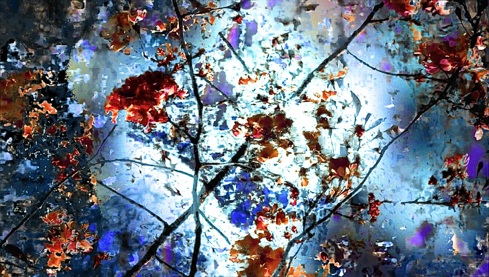
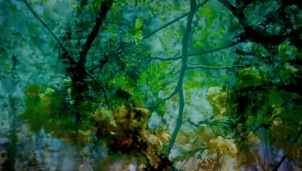
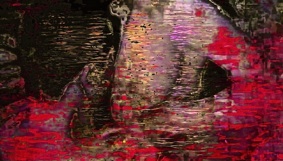
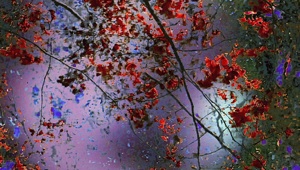
Text by Francesca Rusalen and Francesco Cazzin for my film TRACES OF GARDEN in Italian, unfortunately, I don't have a translation in English.
"Il bosco, i suoi soggetti e quello che ha l'aria d'essere l'amplesso di due amanti: di questo si compone il lungometraggio di Wolfgang Lehmann, Traces of garden (Germania, 2016, 71'), il quale si basa su delle semplici scene ripetute e variate in maniera tale da dare continuamente l'impressione di uno scorrere del tempo nel film stesso. Non si tratta semplicemente di aggiungere o sottrarre colore, di attuare sovrapposizioni o far scorrere pezzi di scena l'una sull'altra, bensì Traces of garden ha maggiormente a che fare col qualitativo, che per sua natura e intrinseca richiesta non si potrà ridurre a una sua quantificazione. Capiamo, allora, come l'esperienza in questo film dello scorrere del tempo non sia riconducibile a quel fare umano che ancora vuole presentarsi il dato, l'oggettivo e la considerazione dell'altro da sé in base al proprio sé e con ciò, se il film di Lehmann scorre nel qualitativo, significa anche che non implicherà immediatamente un suo aver a che fare coll'uomo e le sue esperienze del bosco e dell'amplesso. A questo proposito il confondersi dei due amanti ci è familiare nella misura in cui lo riconduciamo alla nostra vita e tuttavia Lehmann non cerca di entrare in empatia con noi: non solo e non tanto le tracce del bosco disturbano la nostra immedesimazione con gli abbracci, ma si insinuano negli abbracci stessi immanentizzandosi a essi, ovvero in un modo tale da non darsi come dato da aggiungere agli abbracci, bensì come parte degli abbracci stessi. Qui diventa importante la variazione stessa che Lehmann compie lungo il film, non tanto la maniera di variare e i suoi risultati. Il perdurare delle cose spesso le trascina malamente e così saremo portati a focalizzarci sulle maniere di variare, cioè sugli elementi di novità negli abbracci stessi, in modo tale da poter continuare senza che la noia subentri. Tuttavia dire che Traces of garden sia qualitativo ha di fatto già stroncato queste possibilità di inserimento, che ancora si rifarebbero a una logica quantitativa. Il punto infatti non è rendere eterno il discorso amoroso protraendolo all'infinito con delle modificazioni ed è per questo che non si tratta in Traces of garden di aggiungere o sottrarre, bensì di tracce. Non è solo che il bosco e la copula siano immanenti tra loro, da cui ne deriverebbe un discorso che potrebbe farsi circostanziale, al fine del film stesso e lì ridotto, ma la possibilità stessa che dall'immanenza ci sia la variazione che variando porta al proseguimento dell'immanenza medesima nel cinema. Il gioco sta allora credere nel cinema. Infatti, non possiamo che riprometterci la novità, salvo poi accorgerci che la routine ci precede, ci forma. Non si tratta con ciò di combatterla al fine di preservarci, bensì di produrre uno scarto nella routine stessa. Quando crediamo nel cinema non crediamo alla sua storia o al suo utilizzo per un farsi eterno, bensì crediamo nella possibilità che una proliferazione di possibili possano agire come scarto su una realtà permeata da una quotidianità la cui abitudine è in fondo per noi anche un fattore di sopravvivenza. In Traces of garden non c'è traccia della novità come antidoto alla noia, bensì è su questa stessa che il lungometraggio si radica, non chiaramente in senso dispregiativo e infatti non c'è bisogno di un antidoto: l'esaltazione di imprese eroiche e/o straordinarie piegano la vita e la realtà vissuta a un suo continuo sostenimento su un vuoto girare, in modo che il chiasso attutisca l'orrore per l'abisso senza senso su cui quotidianamente poggiamo come esseri umani. Con questo non solo pensiamo che si sia perso il silenzio, ma gli stessi rapporti attorniati da incontri che, cattivi o buoni che siano, ci distolgono dal domandarsi come sia quell'eccedenza nel continuo quantificare. In questo senso allora l'amplesso e il bosco, variando ogni volta nella loro ripetizione, non sono mai davvero gli stessi e non lo sono all'interno del cinema: il discorso non significa che solo in questo luogo tutto ciò sia possibile, ma che questo luogo è quello dell'immagine e quindi del possibile. Così ci focalizzeremo sulle tracce e il loro resistere alla realtà fa sì che dalle stesse nasca qualcosa di davvero significativo, oltre forse la nostra stessa esistenza, se la si può davvero oltrepassare."
AUTORI
Francesca Rusalen Francesco Cazzin
http://emergeredelpossibile.blogspot.se/…/traces-of-garden.… Seite 1 von 7
Traces of garden | L'emergere del possibile 23/01/17 12:51
Pieghe
Pratiche della visione Sacramenti
Simulacri
CORPO
► 2017 (10) ▼ 2016 (194)
